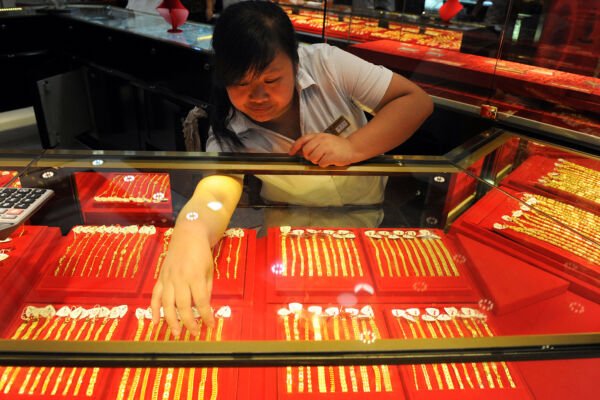On October 28, 2024, the latest data released by the China Gold Association showed a significant decline in gold consumption in the first three quarters of 2024 compared to the same period last year. This decline, amounting to 11.18%, brought the total gold consumption in China to 741.732 tons.
According to the association’s data, gold jewelry purchases, which accounted for 53.9% of the total consumption, dropped to 400.038 tons from January to September, a decrease of 27.53% compared to the same period last year.
While the consumption of gold bars and coins as hedge assets has seen some growth in the first three quarters, the substantial decrease in gold jewelry consumption has driven the overall decline in China’s gold consumption.
“The continuous rise in gold prices throughout the first three quarters has significantly affected gold jewelry consumption,” stated the Gold Association.
The persistent economic downturn has made Chinese consumers increasingly price-sensitive, putting more pressure on gold jewelry retailers. According to reports from “Yicai”, on October 22, Chow Tai Fook announced a 21% year-on-year decrease in retail value for the second quarter of the 2025 fiscal year (July 1, 2024, to September 30, 2024). During this period, the group closed 145 retail stores in China.
The latest financial report for the second quarter of the 2025 fiscal year released by Luk Fook Group also indicated a 16% decrease in overall retail value, a 35% year-on-year decline in same-store sales, and a net reduction of 76 stores.
Despite the decline in gold jewelry sales, the China Gold Association mentioned that due to “relatively low premiums”, the purchase volume of gold bars and coins saw a 27.14% year-on-year increase to 282.721 tons in the first three quarters of this year. The purchase volume of gold bars and coins usually reflects the demand for hedging purposes.
The association also noted that in the first three quarters of 2024, on expectations of rising gold prices, domestic gold ETF holdings increased to 91.39 tons, showing a growth of 48.69% from 2023.
Economic indicators in the United States also have an impact on gold prices. According to Reuters, gold prices dropped on Monday, October 28. Spot gold prices fell by 0.5% to $2,732.98 per ounce, below the record of $2,758.37 set the previous week. With the strengthening of the US dollar and the rise in US Treasury yields, investors are awaiting US economic data to be released this week, including the Personal Consumption Expenditures (PCE) data and employment reports. These data will provide insights into whether the Federal Reserve will continue to cut interest rates. Rate cuts are expected to drive gold prices up.
Giovanni Staunovo, an analyst at UBS, stated, “The prospects of rate cuts in the United States support further investment demand and boost gold prices. We expect gold prices to reach $2,900 per ounce within the next 12 months.”
Staunovo further noted, “While physical gold demand has been weak recently in Asia, especially in China, I believe the focus of gold demand is shifting from the East to the West.”

